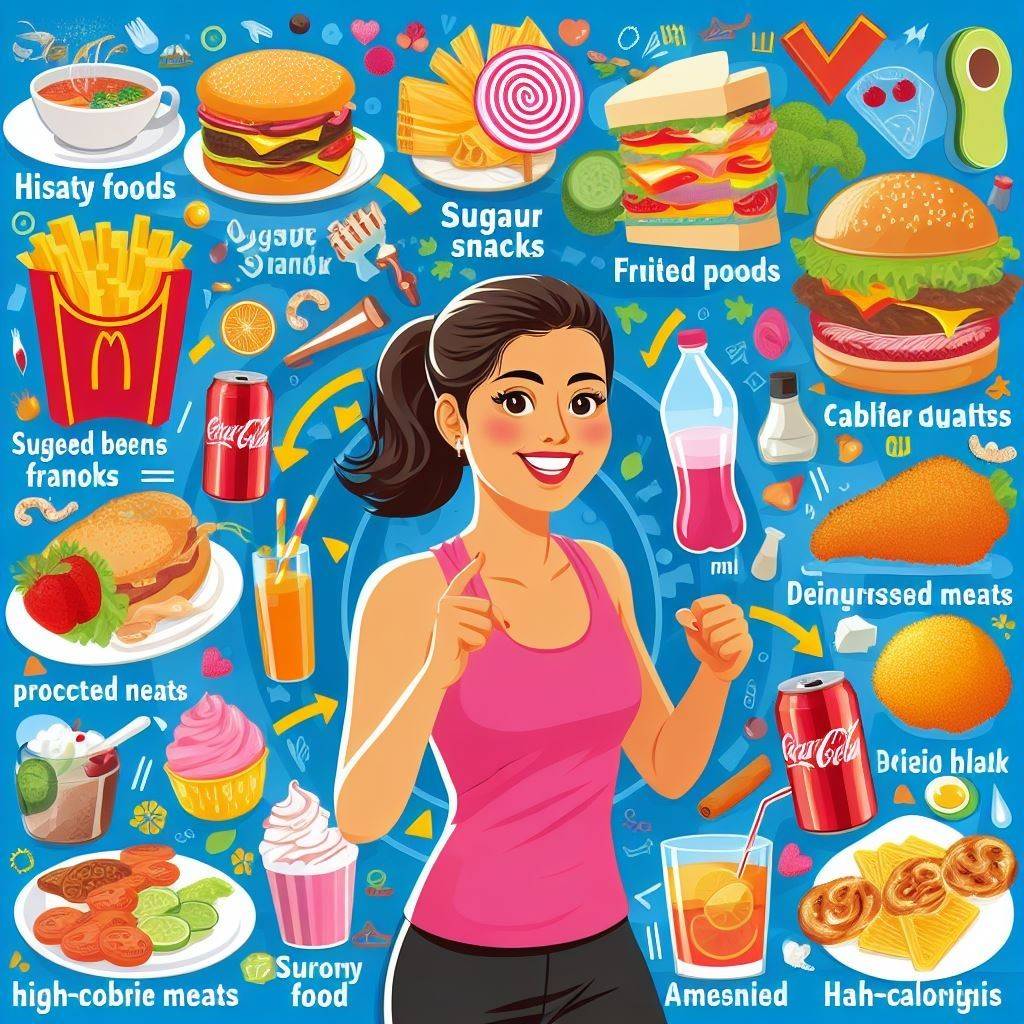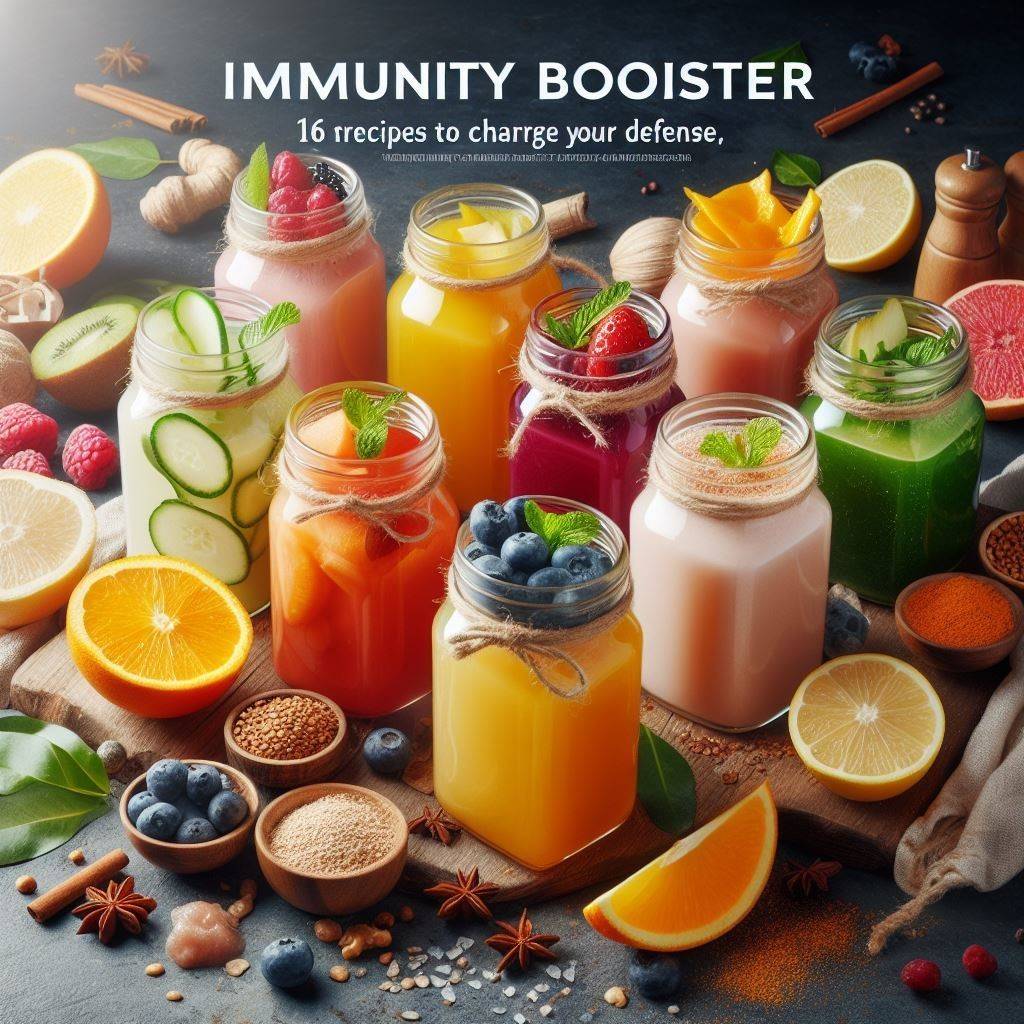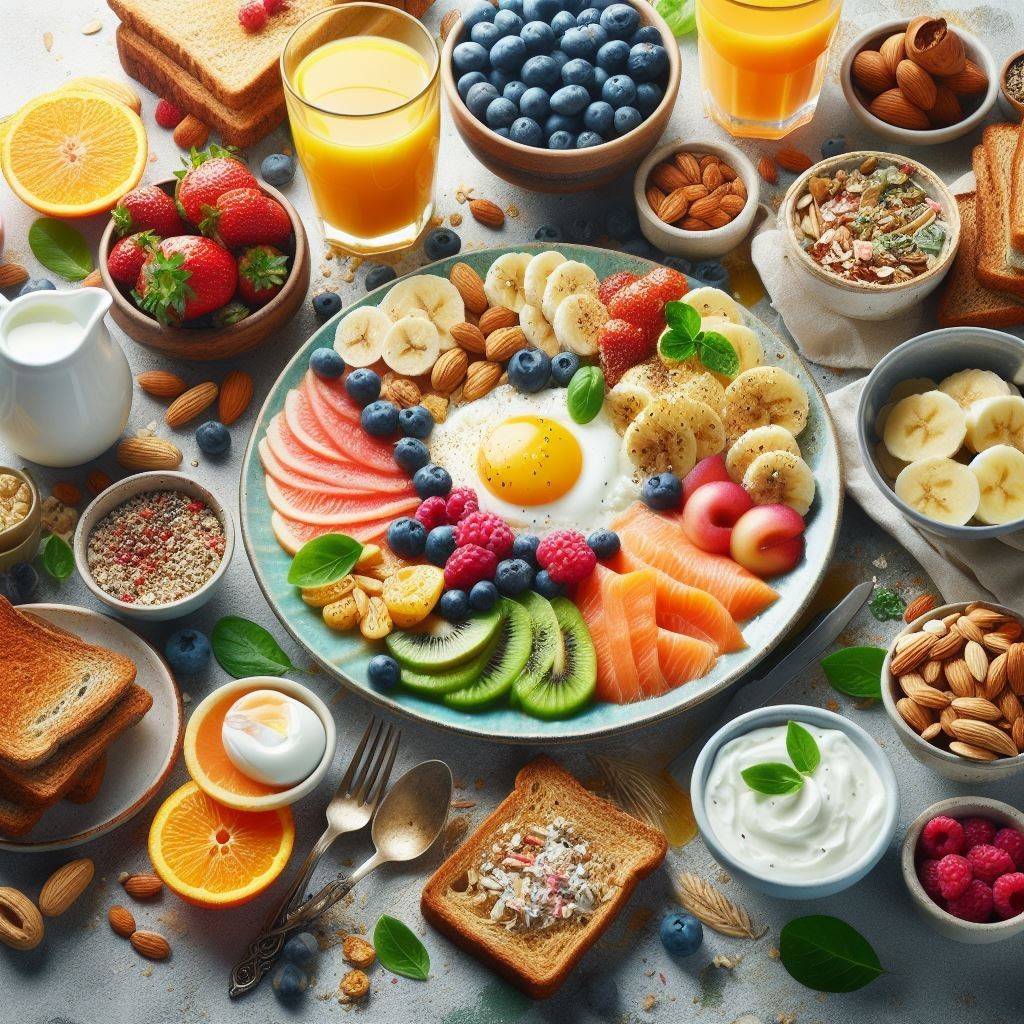16 Foods to cut out for weight loss: The hidden calorie bombs.
Discover 16 foods to cut out for weight loss. Unveil hidden calorie bombs sabotaging your diet. Start shedding pounds now!
What are the Foods to cut out for weight loss?
Losing weight often comes down to one key principle – burning more calories than you consume. While eating too many obvious culprits like fast food, candy, and sugary drinks can easily derail your weight loss efforts, many seemingly healthy foods can sabotage your progress due to their high-calorie content. Foods to cut out for weight loss are those that are energy-dense but nutrient-poor, meaning they pack a lot of calories into a small portion without offering much in the way of vitamins, minerals, protein, or fiber.
Identifying and eliminating these foods to cut out for weight loss can help create the calorie deficit needed for shedding extra pounds. In this article, we’ll explore 16 common foods to cut out for weight loss that may be hindering your progress despite being seen as relatively healthy choices.
16 Foods to cut out for weight loss and their hidden calorie counts.
1. Fruit Juices
While whole fruits can be a great addition to a weight loss diet due to their fiber and nutrient content, fruit juices are a very different story. During the juicing process, all the fiber is removed, leaving only the sugar and calories behind.
A single 12 oz glass of orange juice, for example, contains around 170 calories and 33 grams of sugar – that’s more sugar than a candy bar! Swap out fruit juices for whole fruits or infused water to avoid consuming foods to cut out for weight loss.
2. Granola and Granola Bars
Granola is often marketed as a healthy snack or cereal, but many varieties are loaded with added sugars, oils, and excess calories. A single 1/2 cup serving of some granola can contain upwards of 300 calories.
Granola bars can be just as calorie-dense, with some brands packing over 200 calories into a single bar. Look for low-sugar granolas made with minimal added oils and sugars or opt for fresh fruit and nuts instead when possible.
3. Trail Mixes
Trail mixes make for a convenient snack, but their combination of nuts, seeds, dried fruit, and often added oils and sugars means their calories can add up quickly. A 1/4 cup serving of some trail mixes can contain over 200 calories.
Make your trail mix at home using unsalted nuts and seeds with just a small amount of dried fruit to keep portions and calories in check.
4. Smoothies
Smoothies can be a great way to pack in fruits, veggies, and protein powder, but they can also be a stealth food to cut out for weight loss if you’re not careful. Using juice instead of milk can drastically increase the sugar content while adding nut butter, sweeteners, and extras like granola or chocolate chips sends the calorie count soaring.
A 20 oz smoothie from a chain restaurant can easily contain over 500 calories! Stick to smoothies made with milk or non-dairy milk, frozen fruit, veggies, and protein powder for a lower-calorie option.
5. Flavored Yogurts
Plain Greek yogurt can be an excellent source of protein and beneficial probiotics for weight loss. However, many popular yogurt varieties, especially those marketed toward kids, are loaded with added sugars.
Some fruited yogurts contain upwards of 20 grams of sugar per 5-6 oz serving. Choose plain, unsweetened yogurt and add your own fresh or frozen fruit for natural sweetness.
6. Energy and Protein Bars
While convenient, the average energy or protein bar is often highly processed and calorie-dense while providing little in the way of nutritional value. Many bars contain over 300 calories and are high in added sugars and unhealthy fats.
For a nutritious on-the-go snack, stick to fresh fruit, nuts, and hard-boiled eggs, or make your protein balls or bars at home using simple, whole-food ingredients.
7. Dried Fruit
Fresh fruit can be part of a weight loss diet, but dried fruit is easy to overeat due to its concentrated sugar content and calorie density. One cup of fresh grapes contains around 60 calories, while one cup of raisins packs over 400 calories!
Enjoy dried fruit in small portions and opt for fresh fruit more often to get the fiber benefits while limiting excess calories.
8. Flavored Nut and Seed Butter
While natural nut and seed butter like peanut butter and almond butter can be a healthy, protein-packed addition to your diet, many popular flavoured varieties contain added sugars and oils that drive up the calorie content.
Some chocolate or honey peanut butter contains upwards of 200 calories and 15 grams of sugar per 2-tablespoon serving. Stick to natural nut butter and add your flavors like cinnamon or cocoa powder.
9. Baked Goods
From muffins and bagels to pastries and cookies, baked goods may seem innocent enough, but their high amounts of refined flour added sugars, and oils
A single bakery muffin can contain over 500 calories and very little in the way of nutrients. Enjoy baked treats only on special occasions and in small portions.
10. Bottled Coffee Drinks
Your morning coffee run may be adding excess liquid calories to your diet. Many bottled and coffeehouse beverages like lattes, mochas, and frappuccinos are made with whole milk, whipped cream, sugary syrups, and other calorie-rich ingredients.
A 16 oz bottled mocha Frappuccino can contain over 300 calories! Stick to black coffee or espresso drinks made with non-fat milk and no added syrups or whipped cream.
11. Sauces and Condiments
Sauces, dressings, and condiments may seem innocuous, but they can be a major hidden source of added sugars, sodium, and excess calories that contribute to weight gain. Just a few tablespoons of some salad dressings or sauces can contain over 100 calories.
Use sauces, dressings, and condiments sparingly, and opt for homemade, oil-based dressings or vinegar-based sauces whenever possible.
12. Alcohol
While the occasional drink can be worked into a weight-loss diet, alcohol itself is calorie-dense and provides little to no nutritional value. Beer, wine, and mixed drinks can pack anywhere from 100-300 calories per serving.
If you do indulge, stick to lower-calorie options like light beer, dry wines, or liquors mixed with low-calorie mixers, and avoid sugary cocktails and calorie-laden craft beers.
13. Fried Foods
No surprise here – fried foods like French fries, chicken wings, and doughnuts are obvious foods to cut out for weight loss. Not only are they high in calories from the oils used for frying, but frying can produce trans fats and other unhealthy compounds.
One small order of fast-food French fries contains over 300 calories! Choose baked, grilled, or air-fried alternatives instead.
14. Chips and Crackers
Most types of chips and crackers, even those marketed as “veggie” or “multigrain,” are highly processed and calorie-dense, making them easy to overeat. Just an ounce of some cracker varieties contains over 150 calories.
Enjoy chips and crackers only on occasion and in modest portions. Better yet, swap them out for fresh veggie sticks, air-popped popcorn, or whole-grain toast instead.
15. Sweetened Dairy Products
Milk, yogurt, and other dairy products can certainly be part of a weight loss diet due to their protein content. However, many popular varieties contain added sugars that drive up the calorie counts.
Flavored milk, drinkable yogurts, and ice creams should be limited or avoided, as a single serving can easily contain over 200 calories and 20+ grams of sugar.
16. Restaurant Meals
While cooking at home allows you to control ingredients and portion sizes, frequent restaurant meals can hinder weight loss efforts. Many entrées are oversized portions loaded with hidden oils, butter, and sauces.
An average restaurant entrée can contain over 1,000 calories! Stick to simple proteins and veggie sides when dining out, ask for sauces and dressings on the side, and take half your meal home.
The importance of reading nutrition labels
One key strategy for cutting out these hidden calorie bombs is to get in the habit of carefully reading nutrition labels and ingredient lists. Pay attention not just to the calorie counts, but also the serving sizes, as these can be deceptively small.
Look for added sugars listed under names like cane sugar, high fructose corn syrup, dextrose, and more. And keep an eye out for high amounts of saturated and trans fats which can contribute to weight gain.
Tips for cutting out foods for weight loss:
- Cook at home more often using fresh, whole-food ingredients.
- Meal prep healthy snacks and lunches in advance to avoid mindless eating.
- Swap sugary drinks for water, unsweetened seltzers, or unsweetened teas.
- Choose nutrient-dense foods that are high in fiber, protein, and healthy fats to stay fuller and longer on fewer calories.
- Read nutrition labels carefully and avoid foods with lengthy ingredient lists.
- Stick to appropriate portion sizes, even healthy foods.
- Allow for occasional treats in moderation rather than cutting them out completely.
Substitutions for foods to cut out for weight loss
| Instead of: | Choose: |
| Fruit juices | Whole fruits or infused water |
| Trail mixes | Unsalted nuts and seeds with minimal dried fruit |
| Smoothies made with juice | Smoothies made with milk or milk alternatives |
| Flavored yogurts | Plain Greek yogurt + fresh fruit |
| Energy/protein bars | Fresh fruit, nuts, hard-boiled eggs |
| Dried fruits | Fresh fruits |
| Flavored nut butter | Natural nut butter |
| Baked goods | Baked goods on special occasions only |
| Bottled coffee drinks | Black coffee, espresso with non-fat milk |
| High-calorie condiments | Vinegar-based sauces, homemade dressings |
| Alcoholic beverages | Water, seltzer, unsweetened teas |
| Fried foods | Baked, grilled, air-fried foods |
| Chips and crackers | Veggie sticks, popcorn, whole grain toast |
| Sweetened dairy | Plain milk and yogurts + fresh fruit |
| Large restaurant portions | Control portion sizes + get extras boxed |
The key is to pay attention to nutrition labels, watch your portions, and swap out highly processed foods for more nutrient-dense, whole-food alternatives whenever possible. With some simple substitutions, you can cut out foods to cut out for weight loss while still enjoying a varied, flavorful diet.
Conclusion
Foods to cut out for weight loss are those that pack a ton of empty calories into a small portion without providing much nutritional value. While they may be seen as relatively healthy options, items like fruit juices, granolas, trail mixes, smoothies, flavoured yogurts, protein bars, dried fruits, nut butter, and baked goods can all be easy to overeat and hinder weight loss progress.
By carefully reading nutrition labels, becoming aware of serving sizes, and swapping out these calorie bombs for nutrient-dense whole foods like vegetables, fruits, lean proteins, and whole grains, you can cut calories without cutting flavour or satisfaction. Remember, even healthy foods can stall weight loss if overeat, so practice portion control.
With some simple food swaps and a focus on eating more whole, unprocessed foods, you can create the calorie deficit needed for safe, sustainable weight loss without deprivation.
FAQs Frequently asked questions
Can I ever eat the foods mentioned, or do I have to cut them out completely?
While these foods to cut out for weight loss should be limited or avoided when trying to create a calorie deficit, you don’t necessarily have to eliminate them forever. The key is moderation and being mindful of portion sizes. Enjoy treats like baked goods, fried foods, or alcoholic beverages only on special occasions and in small portions that fit your calorie goals.
Will cutting out these foods alone lead to weight loss?
Cutting out high-calorie, nutrient-poor foods to cut out for weight loss is an excellent start, but likely won’t lead to significant weight loss on its own. You’ll also need to focus on creating an overall calorie deficit by eating nutrient-dense foods that promote satiety, increasing your activity levels, and being mindful of portion sizes of even healthy foods.
Are there any exceptions for very active individuals?
If you have a very high activity level through exercise or a physically demanding job, you may have a bit more flexibility in your diet and be able to consume some of the foods to cut out for weight loss in moderation without consequences. However, whole, nutrient-dense foods should still make up the bulk of your diet for overall health and performance.
What if I’m trying to gain weight? Can I eat these foods?
While the recommendations here are geared towards those looking to lose weight, you’ll likely want to avoid these foods to cut out for weight loss if your goal is to gain weight healthily. Focus instead on getting your extra calories from nutrient-dense sources like lean proteins, healthy fats, complex carbs, and fresh produce.



